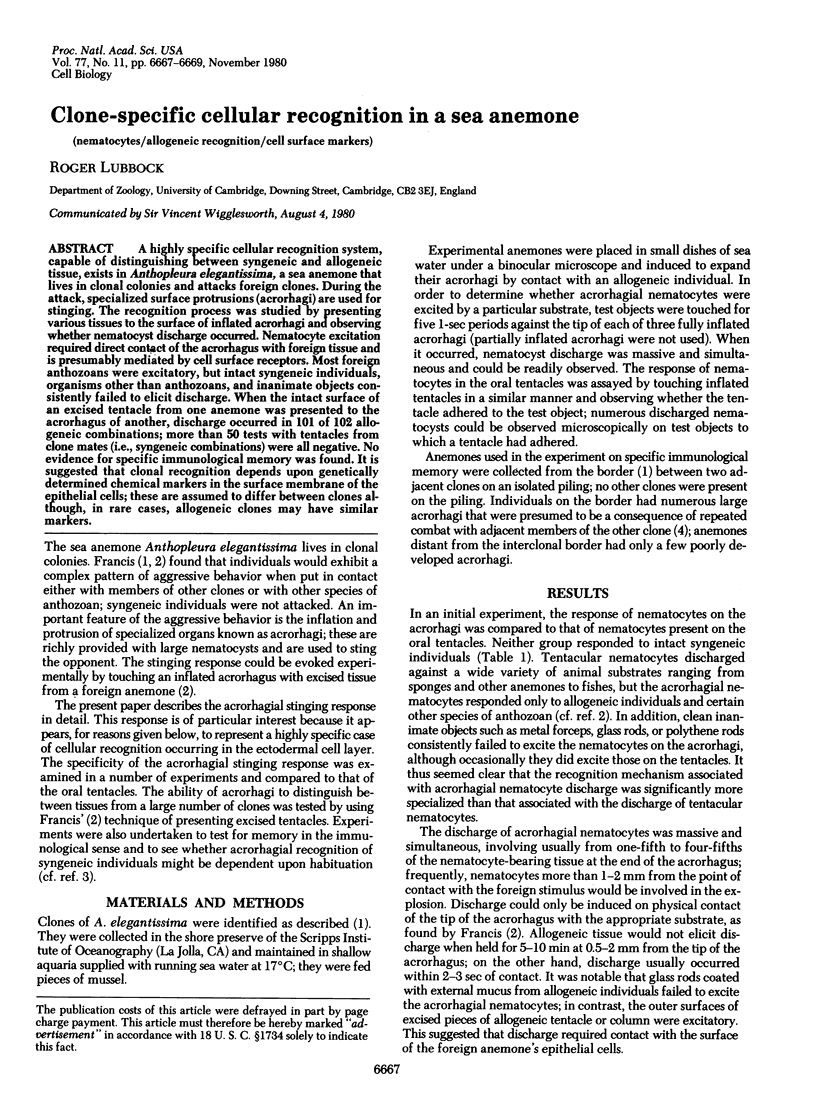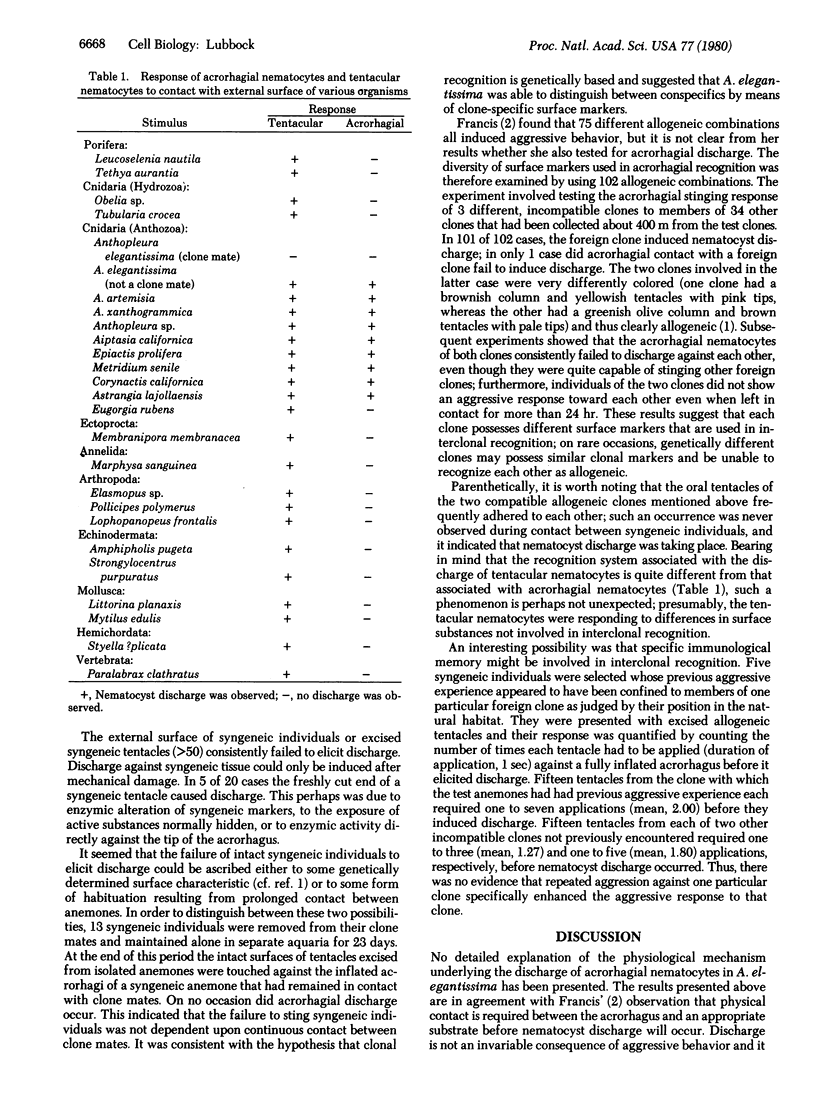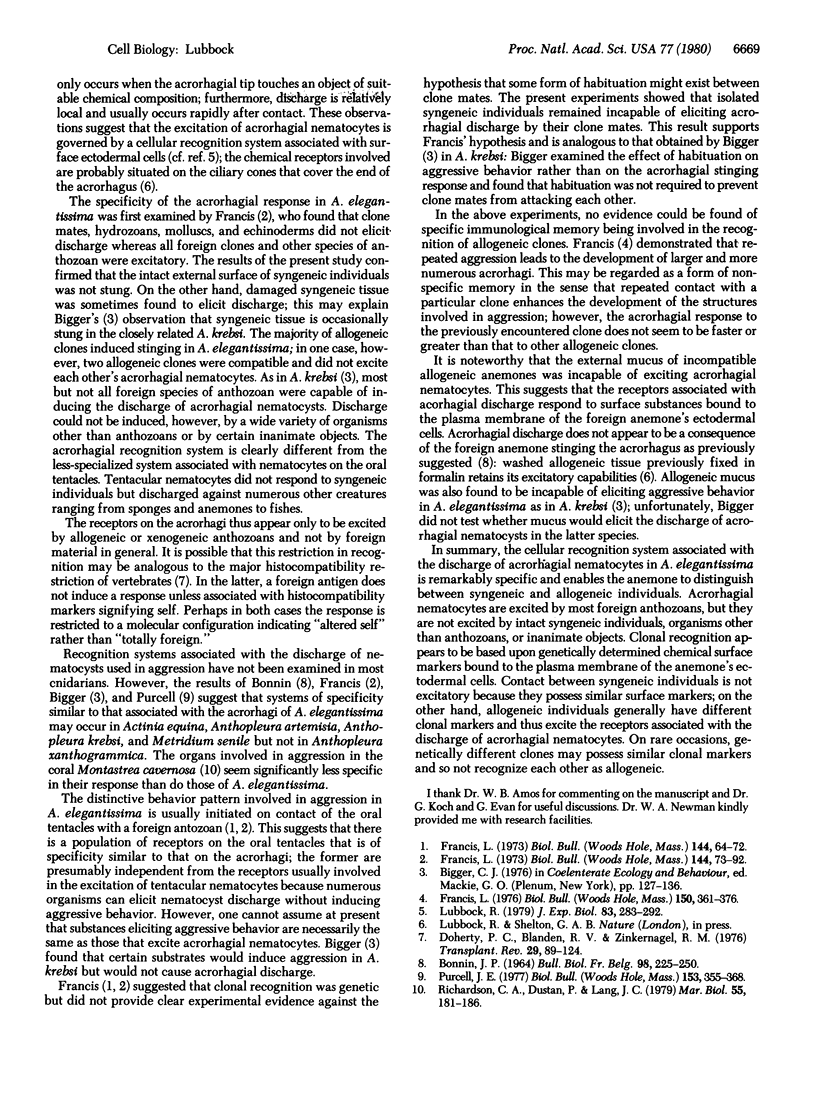Abstract
A highly specific cellular recognition system, capable of distinguishing between syngeneic and allogeneic tissue, exists in Anthopleura elegantissima, a sea anemone that lives in clonal colonies and attacks foreign clones. During the attack, specialized surface protrusions (acrorhagi) are used for stinging. The recognition process was studied by presenting various tissues to the surface of inflated acrorhagi and observing whether nematocyst discharge occurred. Nematocyte excitation required direct contact of th acrorhagus with foreign tissue and is presumably mediated by cell surface receptors. Most foreign anthozoans were excitatory, but intact syngeneic individuals, organisms other than anthozoans, and inanimate objects consistently failed to elicit discharge. When the intact surface of an excised tentacle from one anemone was presented to the acrorhagus of another, discharge occurred in 101 of 102 allogeneic combinations; more than 50 tests with tentacles from clone mates (i.e., syngeneic combinations) were all negative. No evidence for specific immunological memory was found. It is suggested that clonal recognition depends upon genetically determined chemical markers in the surface membrane of the epithelial cells; these are assumed to differ between clones although, in rare cases, allogeneic clones may have similar markers.
Full text
PDF


Selected References
These references are in PubMed. This may not be the complete list of references from this article.
- Cuatico W., Richardson N. K. Transcutaneous therapeutic canalization of aqueductal stenosis in a hydrocephalic; case report and technical note. Acta Neurochir (Wien) 1979;47(3-4):181–186. doi: 10.1007/BF01406403. [DOI] [PubMed] [Google Scholar]
- Doherty P. C., Blanden R. V., Zinkernagel R. M. Specificity of virus-immune effector T cells for H-2K or H-2D compatible interactions: implications for H-antigen diversity. Transplant Rev. 1976;29:89–124. doi: 10.1111/j.1600-065x.1976.tb00198.x. [DOI] [PubMed] [Google Scholar]


